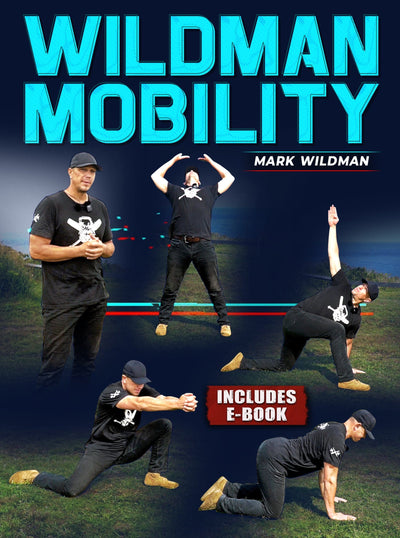Kettlebell Two Hand Swing
The kettlebell two hand swing is a dynamic, full-body exercise that can yield a host of physical benefits when performed with proper technique. It is a foundational movement in kettlebell training and is particularly effective for building strength, power, and cardiovascular endurance.
What this article covers:
- Performing the Kettlebell Two-Hand Swing
- Benefits of Kettlebell Two Hand Swings
- Double Kettlebell Swing
- Banded Kettlebell Swing
- Kettlebell Side Swing
- Heavy Kettlebell Swings
Performing the Kettlebell Two-Hand Swing
To execute a kettlebell two-hand swing, start with your feet shoulder-width apart, toes slightly turned outward. Place the kettlebell on the ground in front of you. Maintaining a flat back and engaged core, hinge at the hips and bend your knees to reach for the kettlebell handle with both hands.
In the starting position, the kettlebell should be positioned between your legs, and your arms should hang straight. To initiate the swing, explosively drive your hips forward, straightening your hips and knees. The power generated from your hips should propel the kettlebell upwards.
At the peak of the swing, the kettlebell should reach chest height, and your arms should be fully extended. It's essential to maintain a tight core and avoid rounding your lower back at this point. Allow the kettlebell to reverse its trajectory, swinging back between your legs. Hinge at the hips and bend your knees slightly to accommodate this motion.
The kettlebell swing should be a fluid, pendulum-like movement, with your hips acting as the hinge point. Perform the exercise for your desired number of repetitions, maintaining control throughout.
Benefits of Kettlebell Two Hand Swings
Cardiovascular Conditioning: Kettlebell swings elevate your heart rate, providing an excellent cardiovascular workout, improving endurance, and burning calories efficiently.
Full-Body Engagement: This exercise engages multiple muscle groups, including the glutes, hamstrings, lower back, core, shoulders, and forearms, making it a comprehensive full-body workout.
Strength and Power: The explosive hip extension in the upswing builds strength and power in the glutes and lower back, helping improve athletic performance and functional strength.
Fat Loss: Kettlebell swings are an effective fat-burning exercise, making them a valuable addition to any weight loss or body composition improvement program.
Posture and Core Stability: Proper form in kettlebell swings reinforces good posture habits and strengthens the core muscles, enhancing stability and reducing the risk of lower back pain.
Time Efficiency: Kettlebell swings offer a time-efficient workout, as they can be incorporated into a high-intensity interval training (HIIT) routine for a quick but effective session.
Muscles Worked During Kettlebell Two-Hand Swings:
The kettlebell swing primarily targets the glutes, hamstrings, lower back (erector spinae), core (abdominals and obliques), shoulders, and forearms. These muscles work together to provide the power, stability, and control necessary for the exercise.
Double Kettlebell Swing
The double kettlebell swing is an advanced variation of the standard two-hand swing. In this exercise, you use two kettlebells simultaneously, one in each hand. It demands greater strength, stability, and coordination because of the increased weight and the need to control two separate kettlebells. The double kettlebell swing is an excellent way to further challenge your posterior chain, core, and grip strength, making it a favorite among experienced kettlebell enthusiasts for building overall strength and power.
Banded Kettlebell Swing
The banded kettlebell swing involves attaching resistance bands to the kettlebell handle and your feet or another secure anchor point. This variation adds an extra layer of resistance to the standard swing, making it a fantastic choice for individuals seeking to intensify their kettlebell workout. The resistance bands create a greater challenge during both the upswing and downswing phases of the exercise, targeting the muscles involved in the movement even more intensely.
Kettlebell Side Swing
The kettlebell side swing is a variation of the traditional two-hand swing where you swing the kettlebell to your side instead of straight ahead. This movement engages the oblique muscles more intensely, providing a lateral component to the exercise. It's a valuable addition for those looking to work their core and lateral muscles while still benefiting from the overall strength and cardiovascular conditioning that kettlebell swings offer.
Heavy Kettlebell Swings
Heavy kettlebell swings involve using a kettlebell that is significantly heavier than what you would typically use for swings. This variation places a greater emphasis on building raw strength and power, challenging your muscles and grip strength to a higher degree. Heavy kettlebell swings are particularly useful for those looking to develop maximal strength and can be incorporated into strength-focused kettlebell training programs. However, it's crucial to maintain proper form and gradually increase the weight to avoid injury.
Each of these kettlebell swing variations offers unique benefits and challenges, allowing individuals to tailor their kettlebell workouts to their specific goals and fitness levels. Whether you're looking to increase strength, target specific muscle groups, or add variety to your training routine, these variations can help you achieve your fitness objectives.
In summary, the kettlebell two-hand swing is a highly effective exercise that offers a multitude of physical benefits, including improved cardiovascular fitness, strength, and power development, while engaging a variety of muscle groups for a well-rounded workout. Proper form and technique are crucial to reap these benefits and avoid potential injury.
Did you find the blog helpful? If so, consider checking out other guides:
- Calories Burned Kettlebell Swings
- CrossFit Kettlebell Swings
- The Kettlebell Swing Challenge
- Kettlebell Swing for Beginners
- Alternating Kettlebell Swing
- What Do Kettlebell Swings Work?
- Benefits of Kettlebell Swings
- Kettlebell Swing Form
- How to Do Kettlebell Swings
- Alternatives to Kettlebell Swings
- 100 Kettlebell Swings a Day
- Kettlebell Swings with a Dumbbell
- 10,000 Kettlebell Swing Challenge
- How Many Kettlebell Swings
- 300 Kettlebell Swings a Day





